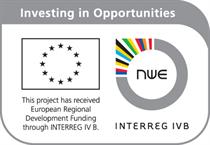Pilot project 3: Communication in soil remediation
Problem
Cities in Flanders only have an advisory role in soil remediation on their territory, but they are the first party to be confronted with worried residents and neighbours. Ghent is facing a number of cases where chlorinated solvent pollution has an impact on a large area. In an urban environment, pollution causes anxiety and produces questions from various parties such as residents, owners, local committees and authorities. CityChlor is therefore keen to study this communication process.
Location
The pilot site is situated in a densely populated area near the city centre of Ghent, where a former laundry and dry cleaner caused widespread contamination with chlorinated solvents. The activities started on this site in 1957 and ended in 2010. In 2000 the first soil and groundwater surveys were started. These were repeated and became more descriptive until a remediation strategy was proposed in 2011. However, the details of the approach are still not certain. Lab tests demonstrate a reduction of the chlorinated solvents following the addition of a carbon source and micro bacteria. Further investigation needs to be carried out to test the technique in a pilot in the field.
This time-consuming and uncertain process is typical for contamination with chlorinated solvents. The SMART principle of communicating with local residents is therefore difficult to achieve. Until all investigations have been completed, it is difficult to give a Specific message. Because the results of the soil investigations can result in several options, it is hard to set Measurable goals from the start. As the remediation plan is often only clear after several years, it is impossible to describe a solution that will be Attainable. However, it is important not to leave residents without any information for a long time, so non-Relevant information is sometimes given just to keep in touch. And last but not least, the Time-bound is the most uncertain aspect of soil and groundwater remediation where chlorinated solvents are concerned. As long as the core of the pollution has not been found, the remediation cannot start. Possible solutions then have to be tested in the lab to see whether they will have a result on the field….
Aim
By means of an in-depth study the University of Ghent will look into this communication process. The first two steps, i.e. the desk study on previous research and the questionnaire with key players at the site, have been completed. The literature studied for this pilot test can be consulted below. In January the OVAM communicated as it has in all the other remediation projects. In autumn a first question round will start: about 700 residents will receive the questionnaire. They will be able to express their concerns and how they would like us to communicate with them. During the remediation, this will be repeated to study the influence of the communication (and remediation) on the residents and what can be done better in future projects. The methodology will be part of our project and can be tested in other pilot sites in France, the Netherlands and Germany. This will give an even more accurate answer with regard to communication and risk perception in remediation projects.

